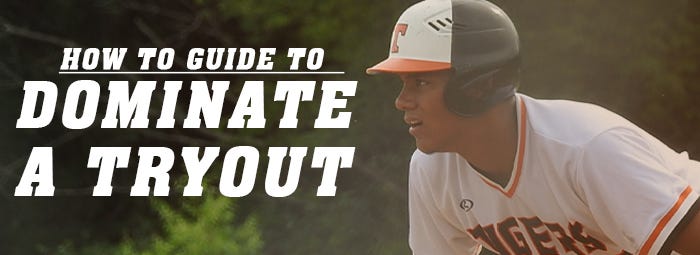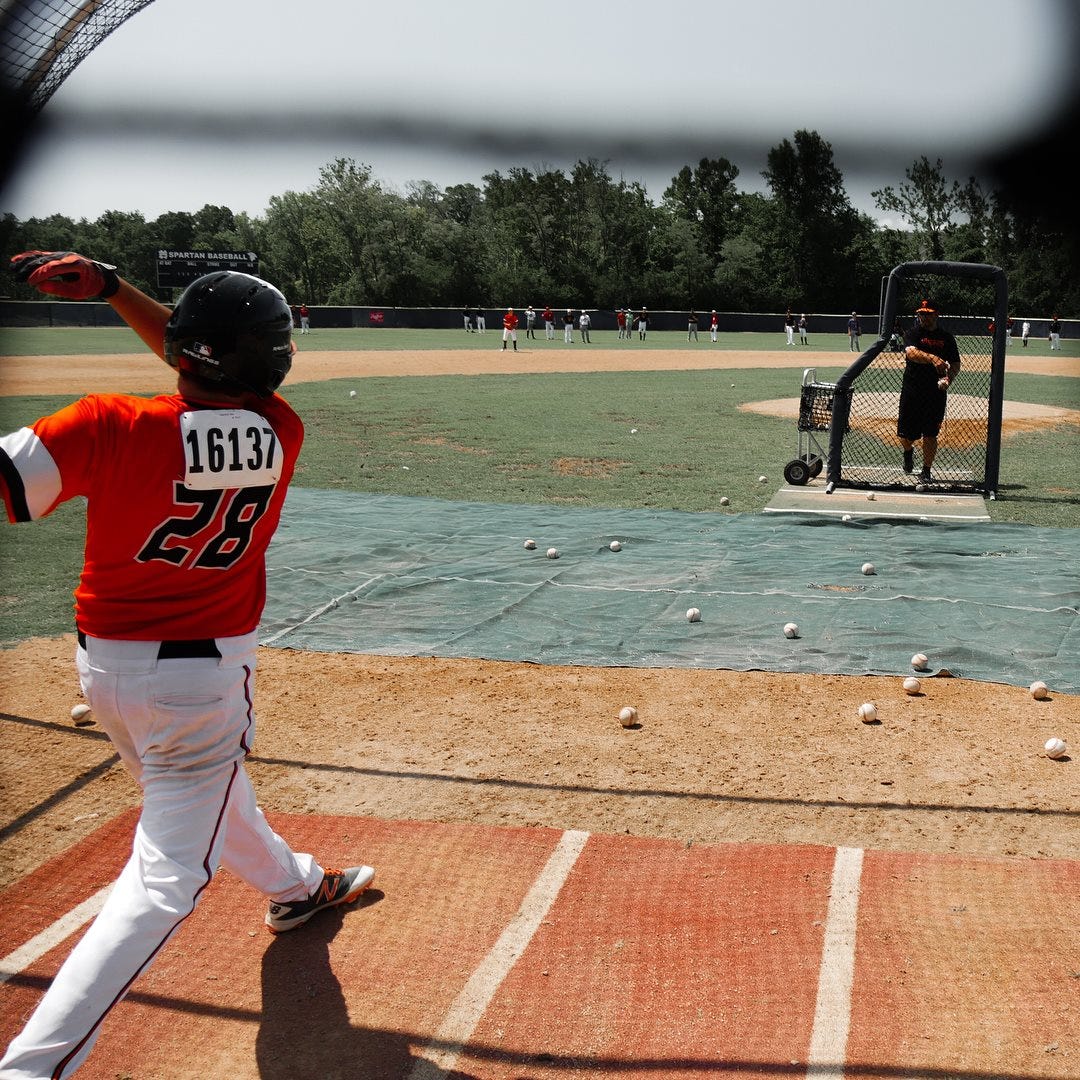
At this National Showcase, there were over 200 participants, many of which were 16-year-olds. To prepare for these type of events was extremely difficult for me because I didn’t know where to start. My family didn’t have a baseball background, I didn’t have a mentor, and the internet was just starting to get interesting. Quality information was not at my disposal. So, I did what everyone did. I lifted, I threw, and I hit.
There was something extremely wrong with this plan…
I was preparing like I was getting ready for a season, rather than preparing for a showcase. There is a huge difference.
Usually, when I talk to a player after a tryout or showcase I get one of two responses. “I did great, I had a lot of fun.” “It was okay, I am not a good tryout guy, I wish we played more games. If we played more games I could really show them what I can do!”
I get more of, “I am not a tryout guy,” response than any other. And I get it… But how do you crush it in our skill evaluation?
Before we start, I need to explain the reasoning behind why you should be more excited about your skills evaluation than your game evaluation.
With a lot of players at these events, it is better to over excel at the skill testing. These are the most important for two reasons. One, you get the undivided attention of the evaluators at the camp and two its’s done at the beginning of the day, so they don’t have event fatigue.
What is event fatigue?

It’s where an evaluator has seen a lot of players and the participants start looking the same.
It’s hard for an evaluator to distinguish between players unless something extraordinary happens. It’s similar to when you listen to the radio. When you listen to the radio on long road trips, every song starts sounding the same.
To crush during these skill tests here is how I would train. To get optimal results I would start training 2–3 weeks before tryouts and do this three days a week. In no way will this make you magically throw 90mph or have an exit velocity of 95mph, but it will make your talent shine. Think about this email as a polishing rag to your Bentley Continental GT-V8.
60yd Dash:
This is the standard distance for a professional tryout. I explained the reasoning in a previous email, but to prepare for this sprint I would do the following:
Quick bursts: 5 x 20yd sprints
Long sprints: 5 X 80yd sprints
Exact sprints: 2 X 60yd sprints
*Find local football field to do workout
Defense:
SS/2B/3B: you will take ground balls at shortstop. This is where the evaluation is typically performed for SS, 2B, 3B. The fungo hitter will give you 4 baseballs. He will hit them in this order:
1. At you
2. Backhand
3. Forehand
4. Slow roller
With this in mind, I would train in 5-minute intervals with 20 minutes of total time spent fielding ground balls. This does not account for pick-up time.
1. At you = 5 minutes
2. Backhand = 5 minutes
3. Forehand = 5 minutes
4. Slow rollers = 5 minutes
1st Base: you will do the same, but take your ground balls at first and throw to third
Outfielders: the same concept but you will take your fly balls in right field and throw to third base and home. In the tryout, you will take 2 fly balls and 2 ground balls.
Catchers: you get 4 throws to second base. Spend 5–10 minutes working on your transfers. 5–10 minutes on your throws.
Hitting: You will get 5–7 swings in a tryout. You need to prepare yourself mentally to only get one round. Do this by taking small rounds of 5–7 pitches. Do not continuously hit, rather hit 5 pitches- take a break, then hit 5 more.
If you would like to tryout for the Tigers, please go to www.rawlingstigers.com. Also, watch this video. It’s how one of our players who went from a 15U Tryout to an MLB Draft Pick.
